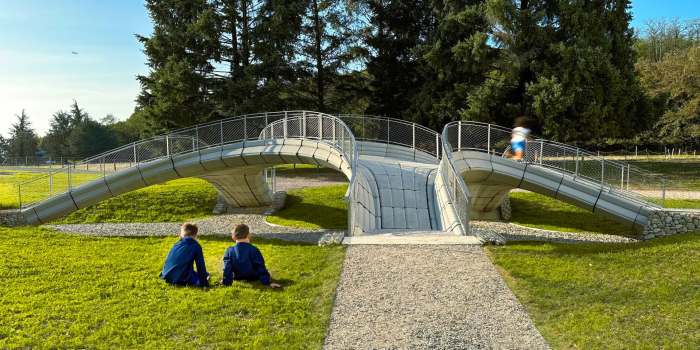Holcim and partners like ETH Zurich’s Block Research Group and Zaha Hadid Architects introduce the Phoenix project in a bold step towards redefining sustainable infrastructure.
Dubbed Phoenix, this innovative project builds upon the earlier Striatus bridge, incorporating 3D-printed elements to reshape the landscape of sustainable construction. In collaboration with ETH Zurich’s Block Research Group, Zaha Hadid Architects Computation and Design Group, and Incremental3D, Holcim envisions a future where infrastructure seamlessly integrates green practices.
Reaching a height of 2.6 meters and spanning 17 meters, Phoenix’s construction involves 3D-printed building blocks created by extruding a cement-based mixture layer by layer, following precise computer-generated plans. The cement mixture incorporates 10 tons of recycled materials, including components from the original Striatus bridge.

The ingenious arrangement of these 3D-printed blocks, coupled with their compression-friendly geometry and support from the bridge’s abutments, results in an incredibly efficient structure. Notably, Phoenix utilizes up to 50% fewer building materials than conventional bridges, offering resource efficiency and ease of disassembly and recycling.
Co-Director of Block Research Group at ETH Zurich, Philippe Block, elaborates on the innovative approach: “Concrete is an artificial stone, and like stone, it does not want to be a straight beam, it wants to be a masonry arch. … 3D concrete printing allows us to use material only and exactly where needed. The result is a sustainable and truly circular approach to concrete construction.”
As the Phoenix project emerges, Holcim and its collaborators actively explore avenues for scaling up this 3D-printed marvel. This endeavor is a testament to the industry’s commitment to environmentally conscious practices in a world where sustainability and innovation converge. Notably, this comes on the heels of similar initiatives, such as a recycled glass-based bridge in Canada and a flax-made bridge in the Netherlands, showcasing a global push towards greener infrastructure solutions.

In essence, the Phoenix project signifies a revolution in construction techniques and embodies a sustainable vision for the future of infrastructure development. As Holcim and its partners continue to refine and expand this groundbreaking initiative, the Phoenix may symbolize a paradigm shift towards more responsible and circular construction practices.


